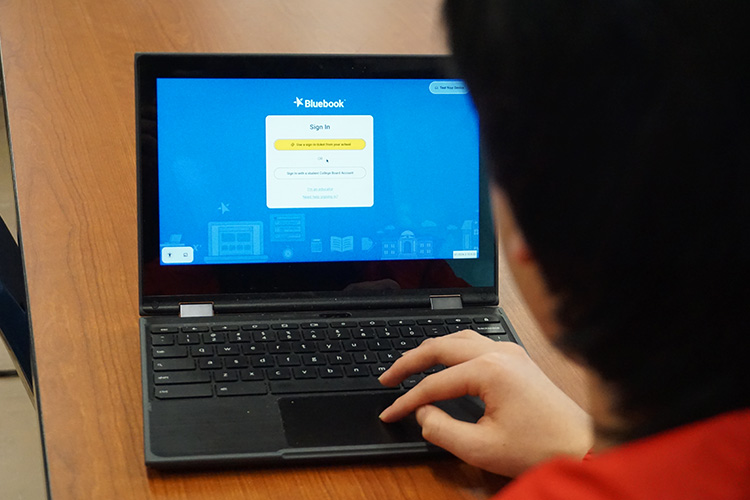
The SAT transitions to a digital format, offering students a new and better testing experience. photo by Emanuel Morales-Gomez
The SAT has been administered with paper and pencil since 1926, but as of Spring 2024, it is now digital.
A new field for standardized tests, many students are ready to welcome the new digital Scholastic Aptitude Test (also known as the SAT). The SAT is an exam that evaluates students’ academic skills. During the test, students answer multiple choice questions on different subjects such as reading, writing, and math. For context, the first usage of the digital SAT was in the spring of 2023, which was taken outside the U.S.. As of spring 2024, the digital format of the exam is now available domestically, and can be taken on weekends in a test center or during school days. The reason why the SAT moved to a digital format is to provide students a better test experience.
There are many changes that the College Board made to the SAT as it is being converted to its digital version. A change made is that students complete the test entirely on a computer, using devices such as school Chromebooks, school issued or personal Macbooks, iPads, or Windows laptops or tablets. However, students can’t take the test on their mobile phone. In addition, the test would last around two hours instead of the previous three hour test. Test takers are able to see how much time they will have on the test with the built in timer that students can choose to hide or show on their dashboard. However, in the final five minutes, the timer will not have the option to be hidden in order to emphasize the time constraint that students face. Furthermore, the College Board stated that scores will be sent out to test takers 2-3 weeks after the test was taken.
There are also changes being made to the English and Math sections. In the reading and writing sections, there will be shorter passages, with a short passage or stimulus tied to every question (some questions might have two short passages). This is different from how it used to be, as the reading section would have a long passage that is tied to a set of multiple choice questions corresponding to the passage. Meanwhile, in the math section, test takers will be allowed to use a calculator throughout the entire test. Test takers are also allowed to bring their own approved calculator, or use the built in graphing calculator in Bluebook. The new built-in calculator is identical to the Desmos graphing calculator, which is commonly used by high school students and is used to graph functions, plot points, and many more features. Students are also now permitted to enter in negative numbers. These are some of the changes that are made to the SAT to provide a better testing experience in general.
There have been many positive opinions on these new features. For example, junior Zackary Vogel believes that the Desmos graphing calculator is going to help many students in the math section. He said that, “because of the different types of functions that it can do, [the calculator] allows for more [math] to be simplified.” He exemplified this with systems of equations that are easier now that students “ don’t have to solve the system mathematically. We can just plug in the equations in Desmos and it would show the right solution.”
While the test is moving to a digital format, there are still features that remain unchanged. The test will still be scored on a 400-1600 scale. As well as this, the test still measures the same skills of reading, writing, and mathematics. Finally, the test will still be proctored in schools, or test centers (which are available for all students). The digital SAT also still has free practice that can be used at Khan Academy.
With the new digital format of the SAT, students will now have an adaptive test. Because the test is split into two modules for English and Math, it means that if a test taker doesn’t do well on the first module, the second module will contain easier questions. According to the College Board, this is to allow for more efficient testing, as it provides all students a fair chance to assess their skills. Furthermore, the digital format of the exam will make it easier to administer as well. These changes to the SAT will hopefully provide a better testing experience for all.